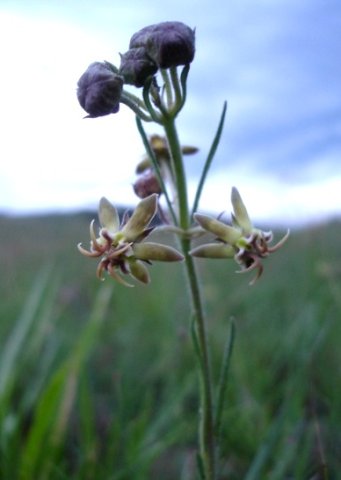Miraglossum pulchellum

Author: Ivan Lätti
Photographer: Judd Kirkel Welwitch
Miraglossum pulchellum, the horned miracle-tongue or hooked miracle-tongue and previously scientifically Schizoglossum pulchellum, is a tuberous perennial reaching heights from 20 cm to 60 cm. The miracle-tongue common name is a direct translation of the generic name, Miraglossum, a Latin word referring to the characteristic corona lobe shape of several of the species.
The plant has been listed as a succulent, probably on the basis that it is a geophyte, having an underground tuber or storage organ, and possibly because it forms part of the Apocynaceae family that includes a significant number of succulents.
The nearly opposite or sub-opposite leaves are long and linear, about sessile or stalkless. The blades are hairy, and the margins are rolled under. They ascend close to the stem and are usually widely spaced. Leaf dimensions are from 2 cm to 5 cm long and 1 mm to 5 mm wide.
The most widely distributed of all Miraglossum species, the plant grows in the northeast of South Africa, from the north of the Eastern Cape to the Free State and KwaZulu-Natal, as well as the provinces north of the Vaal River to Limpopo. It is also found in Lesotho, Swaziland and other African countries. This photo was taken near Underberg in KwaZulu-Natal during November.
The habitat is open grassland at elevations from 600 m to 2300 m. The habitat population is deemed of least concern early in the twenty first century (Germishuizen and Clarke, 2003; Pooley, 1998; Smith, et al, 1997; iNaturalist; iSpot; Wikipedia; http://redlist.sanbi.org).

